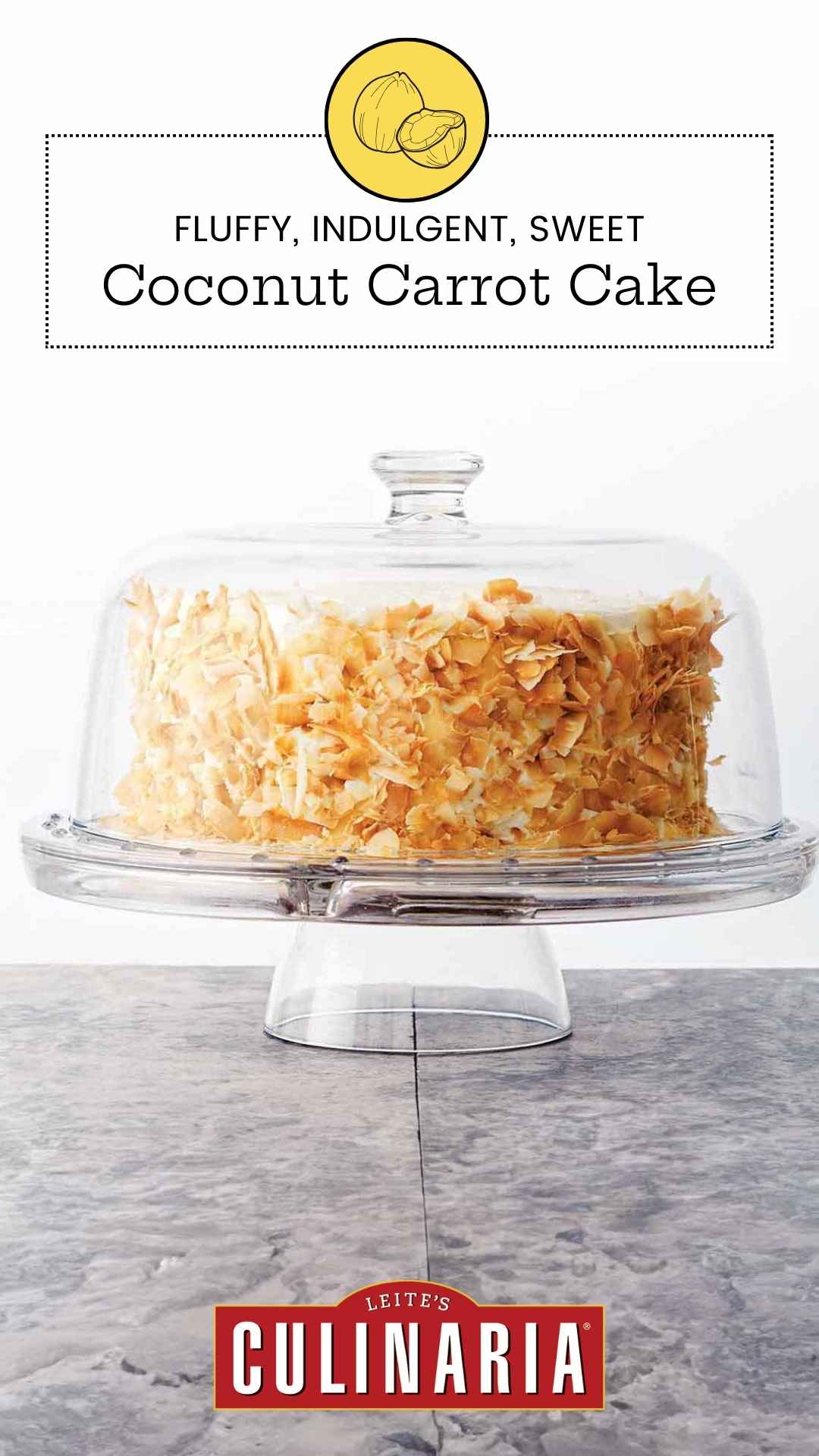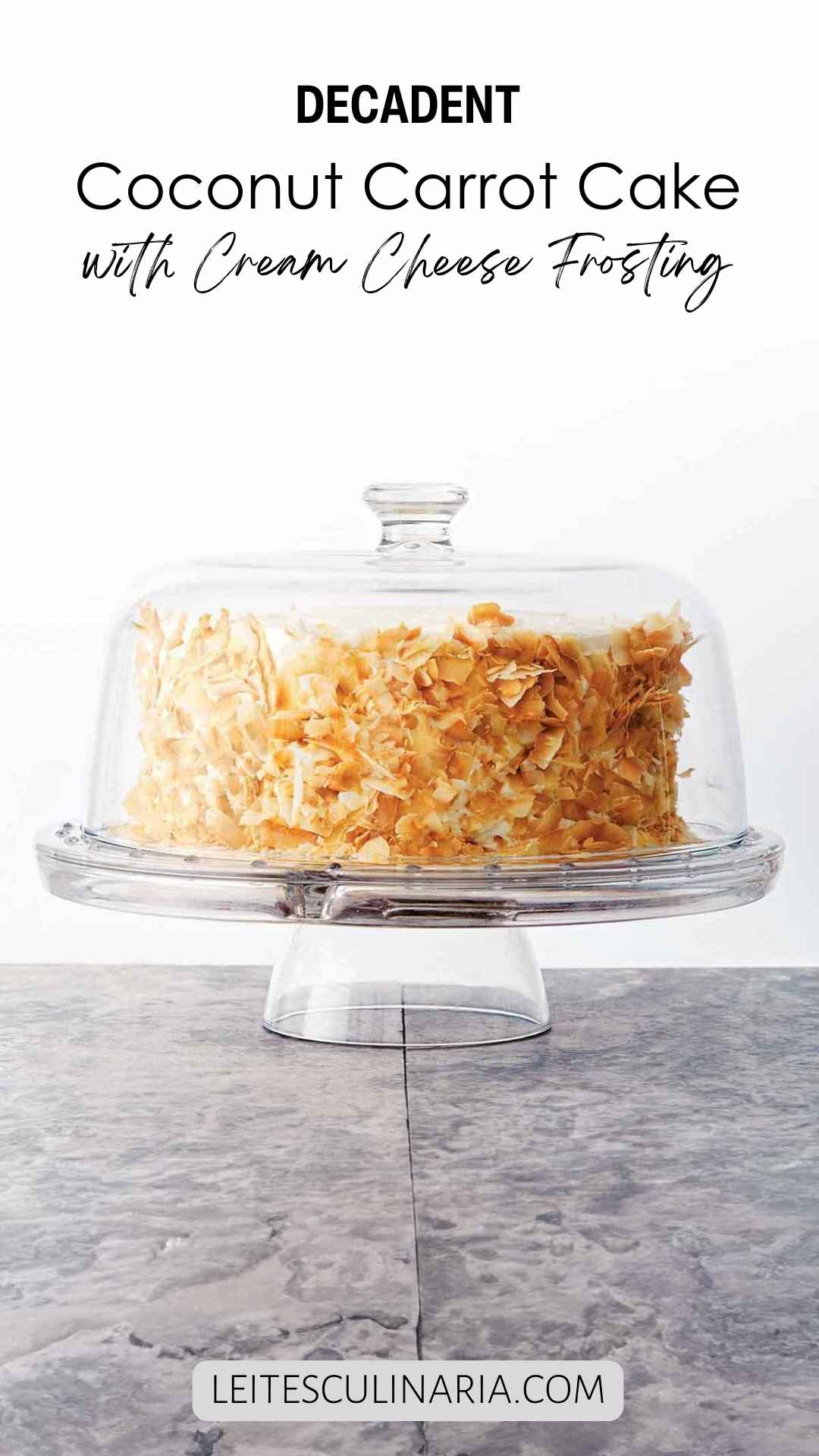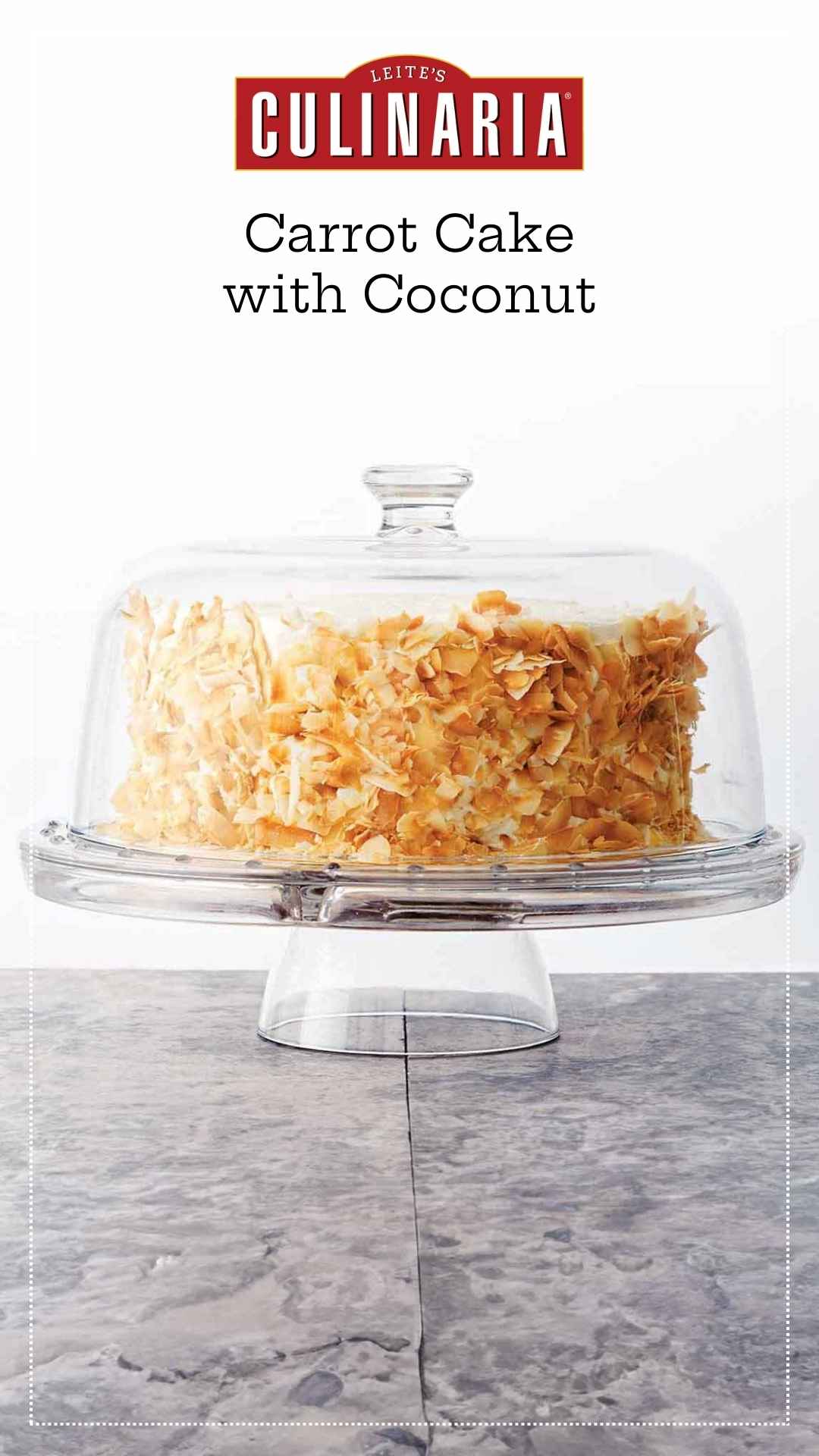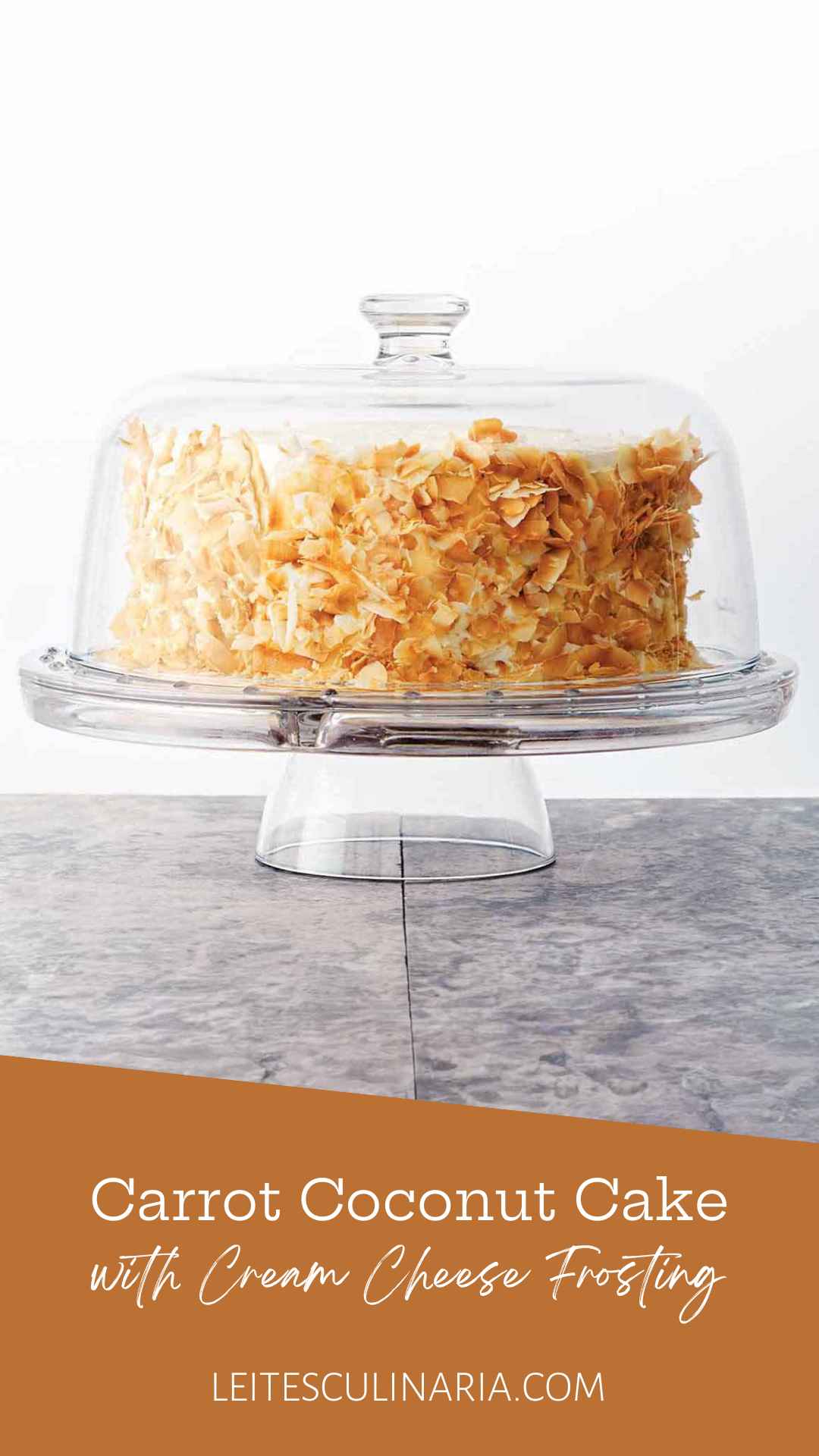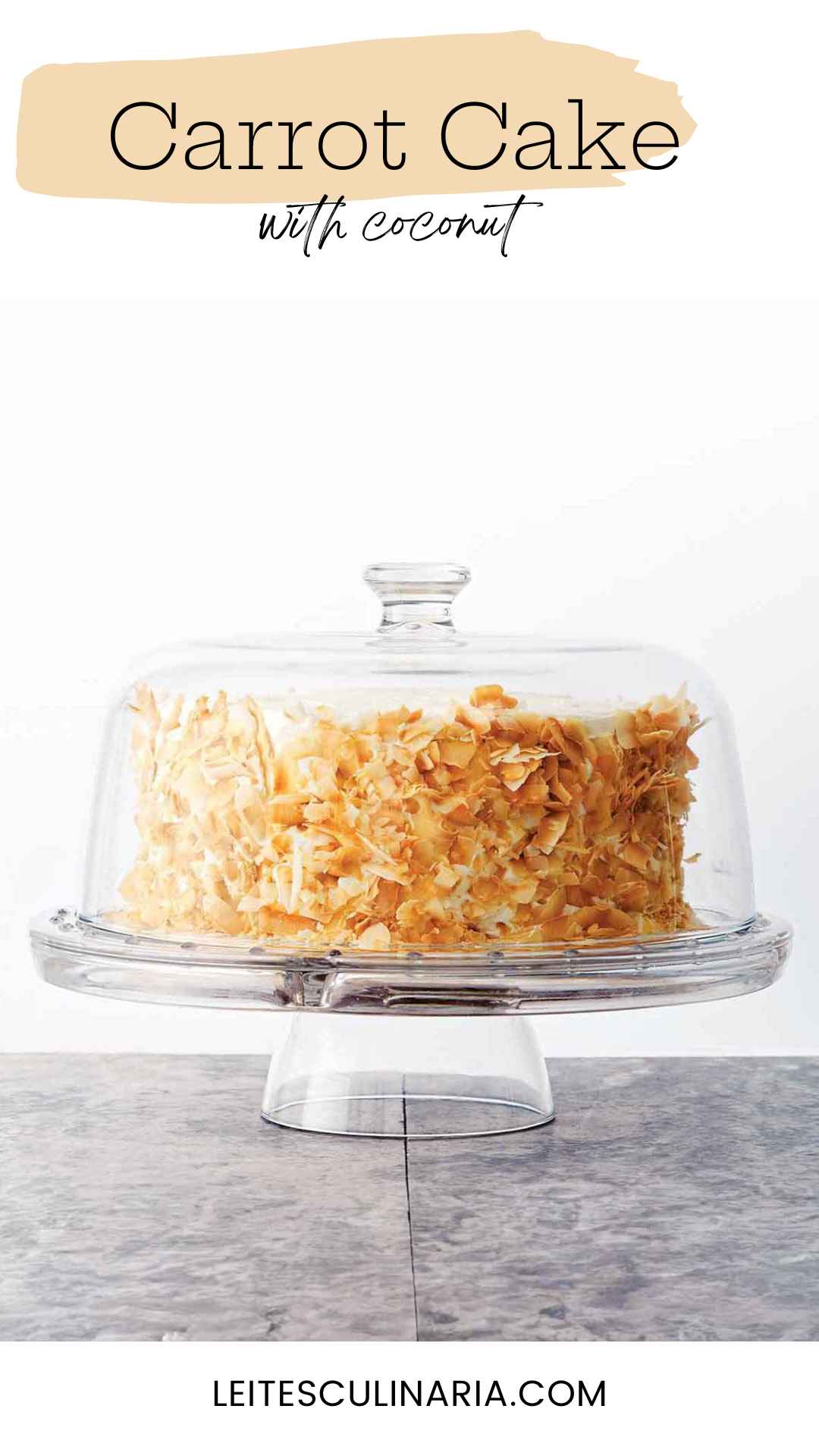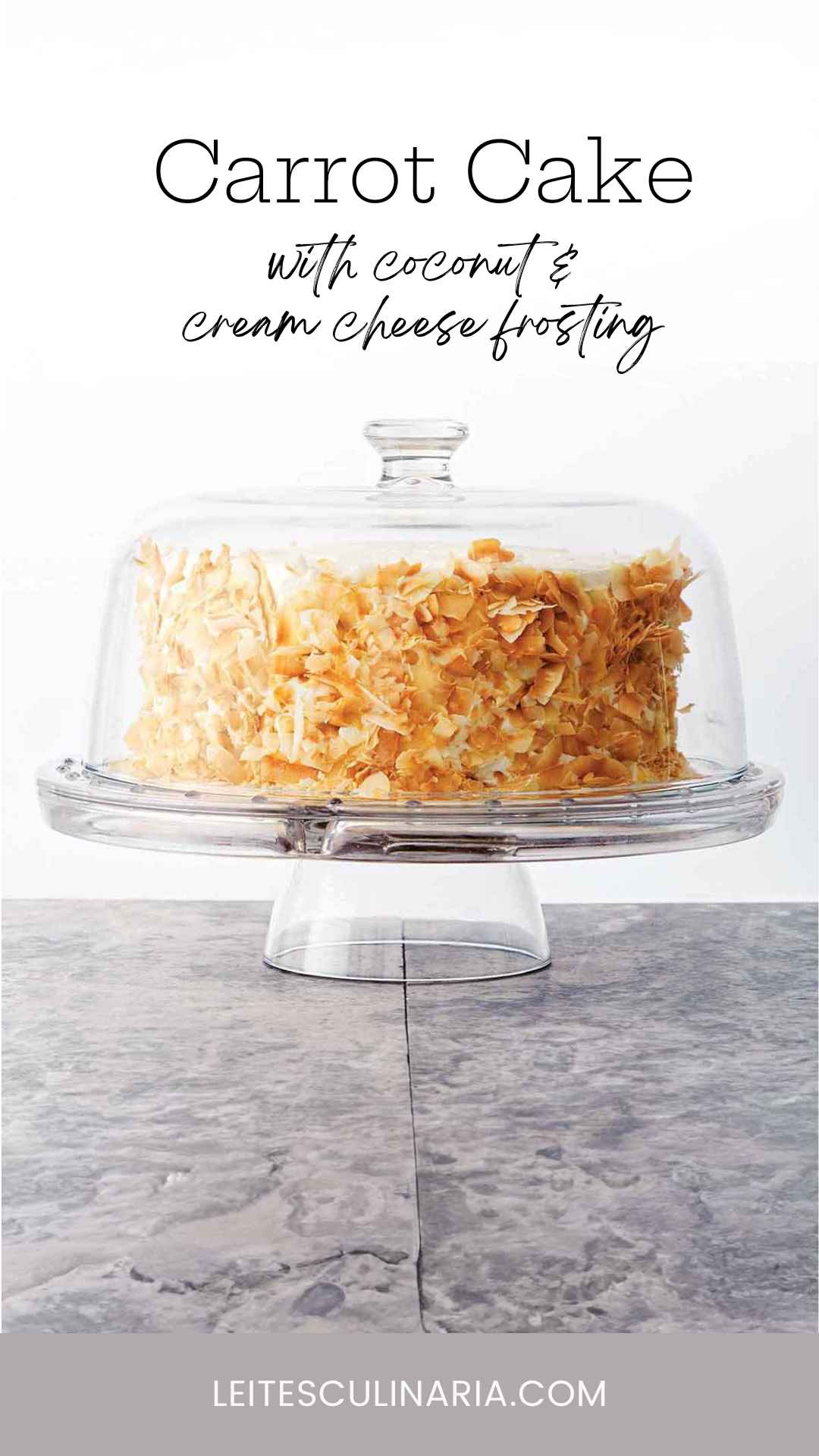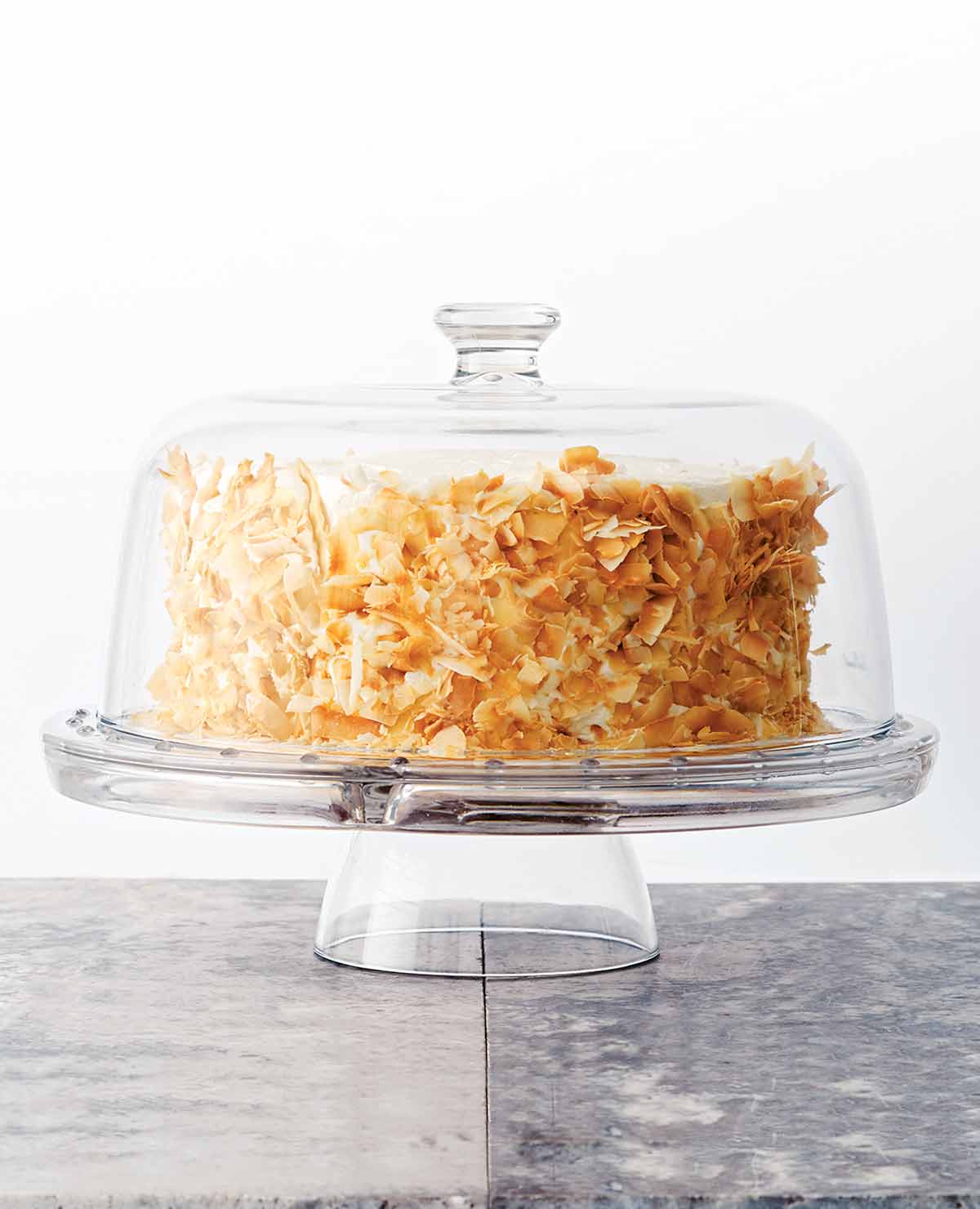
TL;DR (Quick-Answer Box)
- What it is: A moist, tender carrot cake bursting with sweet carrot flavor. The cake layers are soaked in a rich coconut syrup and covered in bright cream cheese frosting.
- Why you’ll love it: This is the definitive carrot cake, featuring an incredible coconut-infused texture (from the syrup) that elevates a classic for any occasion.
- How to make it: Mix the wet and dry ingredients, stir in the carrot, bake the layers, while the cakes are hot, pierce them and soak them with a homemade coconut syrup, cool completely, make the cream cheese frosting, then trim the tops of the cooled cakes and frost with tangy cream cheese frosting and press coconut flakes on the sides.
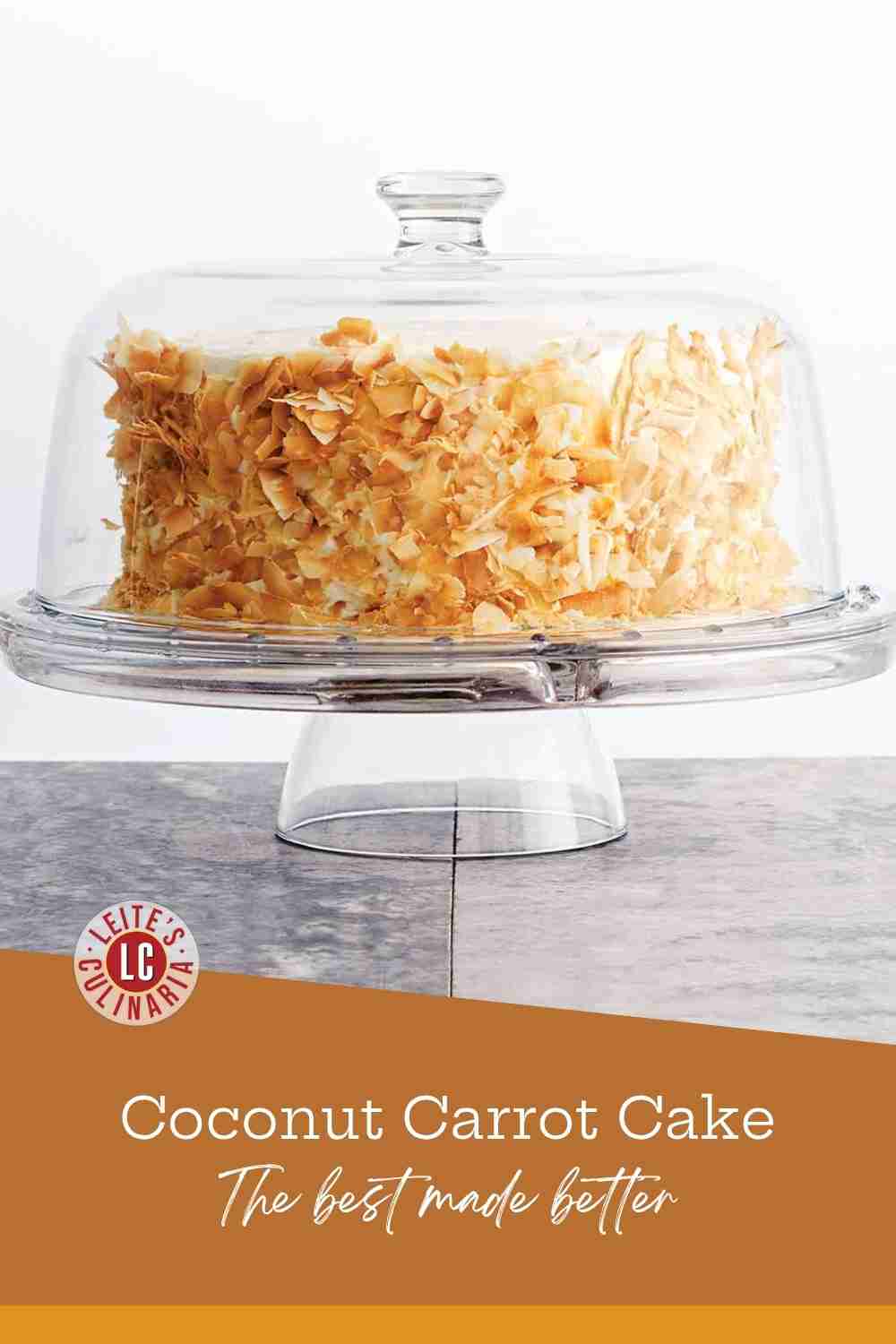
Jump To
I make this stunning coconut carrot cake whenever I want something a little special—be it a holiday, a dinner party, or just a Monday that needs redeeming. What I love most is that the cake layers are lighter and more delicate than the old-timey oil-based, raisin-studded carrot cakes of my youth. There’s no pineapple here either, which you won’t hear me complain about. Instead, I soak the layers with a coconut syrup, slather them in a fluffy cream cheese frosting, and finish the whole thing with a generous snowfall of coconut flakes. It’s deeply satisfying and just indulgent enough—the carrot cake I didn’t know I was waiting for.
Where can I find coconut flakes?
You’ll find coconut flakes at most health food stores as well as many online purveyors. (We’re partial to the Let’s Do…Organic brand of coconut flakes. Although you can also omit the coconut flakes and your cake will still be perfectly coconutty and lovely albeit a little less flamboyantly so.)
Do I have to peel carrots for carrot cake?
You might be thinking of skipping this step for the sake of time or, let’s be honest, your fingers. You might want to reconsider, as carrot peels can sometimes have a bitter taste and unpleasant texture after baking. Just aim the peeler away from those digits and you’ll be fine.
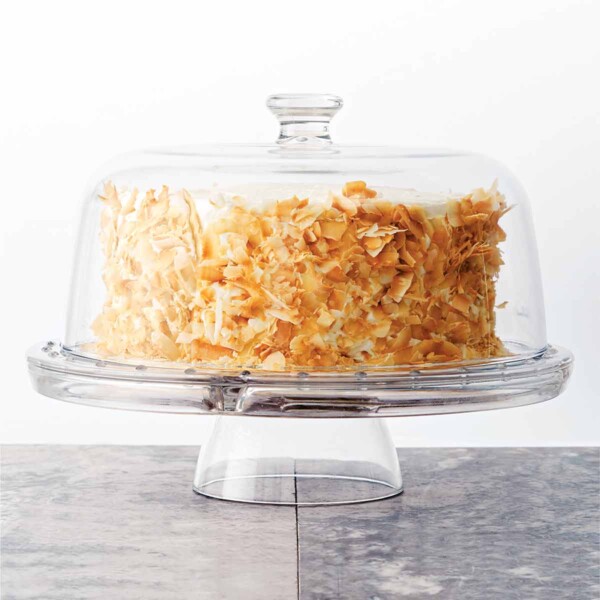
Coconut Carrot Cake
Ingredients
For the carrot cake
- Unsalted butter, for the pans
- 2 1/2 cups all-purpose flour, plus more for the pans
- 1 1/2 cups granulated sugar
- 3/4 teaspoon baking soda
- 1 3/4 teaspoons baking powder
- 1 teaspoon table salt
- 1/2 cup full-fat plain yogurt, preferably not Greek yogurt
- 2 sticks (8 oz) unsalted butter, melted and cooled (or substitute 1 cup/237 ml vegetable oil)
- 1/4 cup cold water
- 4 large eggs, at room temperature
- 3 cups peeled, coarsely grated carrot (about 6 carrots)
For the coconut syrup
- 1/2 cup granulated sugar
- 1/2 cup canned full-fat coconut milk, not low-fat
- 1/4 cup unsweetened shredded coconut*
- Pinch salt
- 1/2 teaspoon coconut extract
For the cream cheese frosting
- 2 sticks (8 oz) unsalted butter, at room temperature
- 3 ounces cream cheese, at room temperature
- Pinch salt
- 4 cups confectioners’ sugar
- 1/2 teaspoon vanilla extract
For assembly
- 1/2 cup coconut flakes*, toasted or untoasted
Instructions
Make the carrot cake
- Preheat the oven to 350°F (177°C).
- Butter the bottom and sides of two 8- or 9-inch round cake pans and dust with flour to coat. Tap out any excess flour.
- In a large bowl, whisk together the flour, granulated sugar, baking soda, baking powder, and salt. Stir in the yogurt, butter or oil, water, and eggs until moistened and no lumps remain. Be careful not to overmix the ingredients. Stir in the grated carrot. Divide the batter evenly between the prepared pans.
- Bake until the cakes are evenly golden on top and a few moist crumbs cling to a skewer or toothpick inserted in the center of each cake, 38 to 40 minutes. Remove from the oven.
Make the coconut syrup
- While the cakes bake, combine the granulated sugar, coconut milk, shredded coconut, and salt in a small saucepan and bring to a boil over medium-high heat. Stir until the sugar dissolves. Remove the pan from the heat, stir in the coconut extract, cover, and set aside to steep for at least 20 minutes.
- Strain the coconut syrup, reserving the coconut for another use or nibbling it while you wait for the cakes to be done. Use the syrup warm or at room temperature. (The coconut syrup will keep, in an airtight container in the refrigerator, for up to 1 week. Reheat it in a small saucepan over low heat before using.)
Soak the cakes in coconut syrup
- Immediately after removing the cakes from the oven, while the cakes are still in their pans, pierce them at 1-inch (2.5-cm) intervals with a skewer or the tip of a paring knife. This creates channels for the syrup to seep into the cakes. Pour or generously brush the syrup over the surface of the hot cake layers, dividing it evenly between them. Move the soaked cake, still in their pans, to a wire rack to cool completely, 1 to 2 hours. When the cake layers are cool and no longer wet to the touch, carefully turn them out of their pans onto a wire rack. (You can carefully wrap the soaked cakes and keep them at room temperature for up to 24 hours before frosting.)
Make the cream cheese frosting
- Combine the butter, cream cheese, salt, and 2 cups (227 grams) confectioners’ sugar in a large bowl and beat with an electric mixer on low speed until incorporated, about 1 minute. Add the remaining sugar and beat on medium speed until the frosting is pale and no longer grainy, about 2 minutes. Add the vanilla and beat until the frosting is very light and fluffy, about 2 minutes more. The frosting will be quite thick. (The cream cheese frosting will keep, in an airtight container in the refrigerator, for up to 1 week. For best results, before using, bring it back to room temperature and stir it vigorously or beat it again before using.)
Assemble the cake
- Place one layer of the cooled cake on a cake plate or platter. Use a serrated knife to gently trim the domed top of the cake to create a flat surface. Cover the top of the cake with some of the cream cheese frosting, spreading it all the way to the edge of the cake. Carefully add the second layer of cake on top of the first and frost the top and sides of the entire cake.
- Immediately after you frost the cake, support the cake plate or platter from the bottom with one hand while holding it above a baking sheet. Gently press the coconut flakes or shards onto the side of the cake with your other hand. (It’s important to press the coconut flakes onto the frosting right away while the frosting is still sorta sticky. Otherwise the coconut won’t adhere.) Slice, serve, and sit back while folks toss accolades your way.
Notes
*How can I make this coconut cake even more coconut-y?
We’re smitten with this coconut carrot cake as-is, although if you prefer your cake to be uber coconutty, then consider doubling the coconut syrup recipe to impart even more of that sweet coconut-y goodness.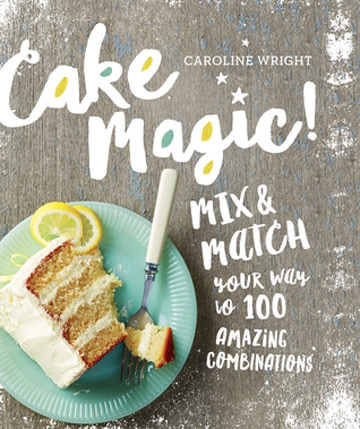
Explore More with AI
Nutrition
Nutrition information is automatically calculated, so should only be used as an approximation.
Recipe Testers’ Reviews
I love this coconut carrot cake recipe. It’s got a nice, tender crumb and tastes VERY homemade. I topped the cake with toasted, sweetened coconut flakes and this was the BOMB. Simple and quick to prepare (about 20 minutes of hands-on time) and you don’t even need a mixer to make the cake. It comes together easily and while the cake is baking, you make the syrup and get the frosting started.
I chose to use 8-inch cake pans and my baking time was 38 minutes. I would recommend using 9-inch pans as the layers would be just a touch thinner and the coconut syrup would sink down deeper. The frosting was adequate to cover the entire cake—a thicker consistency, but it worked. I used 1/4 to 1/3 cup and after my first piece of cake, I wished I had put toasted coconut on the sides of the cake as well. The cake is not too sweet, even with the syrup, so the frosting is necessary.
I think it would be amazing to take a tablespoon of the fat that has risen to the top of the canned coconut milk and mix it into the frosting. That can’t be a bad thing. Next time!
At first glance, this coconut carrot cake recipe looks a bit daunting as it runs several pages with a host of ingredients. Once you look through it, though, each part of the cake is a one-pan recipe that comes together with incredible ease. The only labor-intensive part is grating the carrots.
The addition of the coconut syrup makes the cake extra moist and flavorful while the shredded coconut in the syrup and on the icing gives it a great texture, too. The cream cheese frosting is very tasty.
If you like to eat frosting by the spoonful, I would caution you that the recipe makes just enough to frost both cake layers. (You could double up on the frosting if you want to snitch some while you frost the cake or if you like a lot of icing on your cake.) Well worth the effort. This is certainly a winner.
This recipe yielded a flavorful, moist, pretty cake perfect for almost any occasion. Or, if you’re like me, you’ll make it for no occasion at all and enjoy a slice with a glass of milk or a cup of tea in the afternoon.
The recipe was straightforward and the cake was easy to make, though a lengthy process from start to finish. I loved the coconut syrup but thought some of the flavor was lost amidst the sweet frosting. I also thought the cream cheese frosting could have a bit more cream cheese in it to give it some more tang. Otherwise, I wouldn’t change a thing!
What a very nice and moist coconut carrot cake. I really enjoyed the cream cheese frosting, which had a rather light cream cheese taste. I’d definitely recommend using the toasted coconut to give a crunchy contrast to the fluffy frosting.
I used about 1/2 cup unsweetened shredded coconut and it easily covered the top and sides of the cake. I made the coconut syrup a few days beforehand, and it heated up nicely and retained the same flavor. After adding the syrup to the cake layers, I let them cool overnight and the cakes were still moist when I was ready to frost the next day.
I would make more syrup when making this cake again to really soak the cake layers well. The cake’s coconut flavor is not particularly pronounced. I would make more syrup to accentuate the coconut taste when making this cake again.
